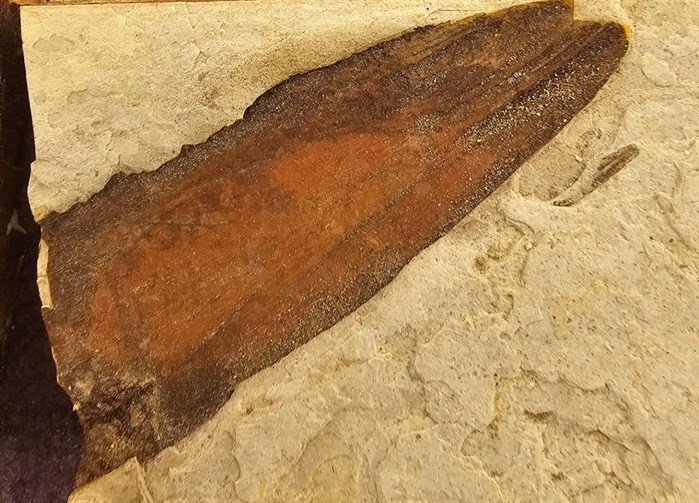
A dragonfly wing from the Eocene epic is fossilized at McAbee Fossil Beds near Kamloops.
Image Credit: SUBMITTED/ Adrian Lewis
July 21, 2025 - 4:00 AM
The well-preserved fossils at an ancient bed near Kamloops show the flora and fauna of an evolutionary period 50 million years ago called the Eocene epoch.
Adrian Lewis, lead tour guide at McAbee Fossil Beds, provides knowledge to visitors on the paleontology and geology on the site, and how the St’uxwtéws, or Bonaparte First Nation, survived on the lands.
“We show people what to look for when studying fossils, it’s a specifically great site that preserved the softer parts of fossils,” he said. “The Eocene epoch was an awesome evolutionary period for mammals and plant species. There was too much CO2 in the air for humans to survive, but that’s what plants and insects thrive off of.”
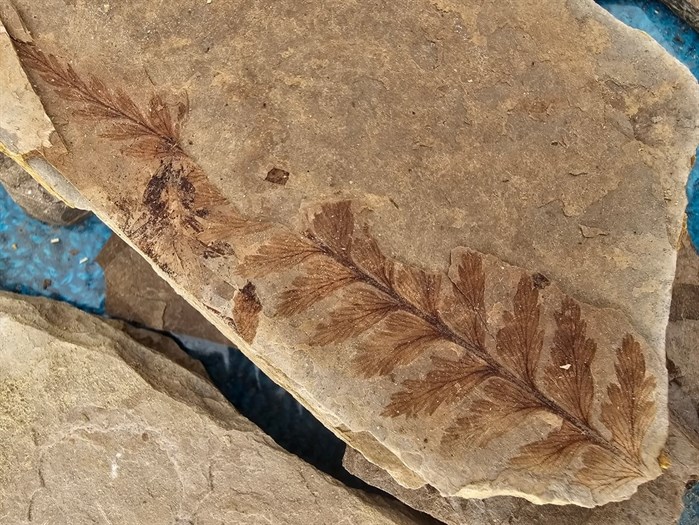
Fossilized plant life can be found at McAbee Fossil Beds.
Image Credit: SUBMITTED/ Adrian Lewis
Managed by the Bonaparte First Nation, McAbee Fossil Beds is a provincial heritage site located on an ancient lake bed where fine silt deposits have preserved not only the remains of plants, insects and fish, but also much of the softer parts, according to the McAbee Fossil Bed website.
The first reports of fossilized plants in the area were made in the late 1800s. Systemic paleontological and geological studies of them started in the 1960s and 70s, and significant research on the site's fossil plants and insects has been ongoing since the late 1980s.
One fossil on the site shows a dragonfly wing that Lewis said was discovered when a fracture in a rock with a fossilized leaf on it was carefully split open. In the Eocene epoch, dragonflies had meter-wide wingspans.
A member of the Tsimshian Nisga’a from Prince Rupert, Lewis teaches visitors about paleontology as they view fossils on display, then takes them on half-hour guided tours that include information on snake and bear awareness, and other wildlife in the area.
“When we take people on tours, if they decide to be hands on, we like that. We’ll get them to try out the edible plants and see how to rely on what the land provides," he said. "As soon as you learn how to read the landscape, the land has a lot more to tell you. I love my job, most days it’s hard to call it a job."
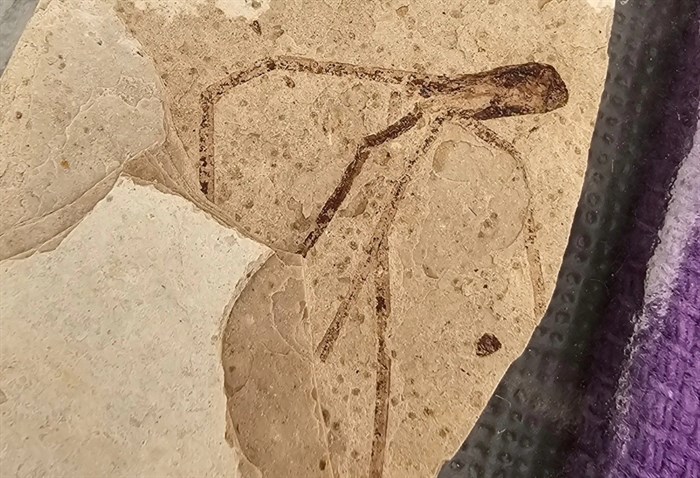
This fossil at McAbee Fossil Beds shows the partial body of a spider.
Image Credit: SUBMITTED/ Adrian Lewis
Plans are in the works for the addition of an amphitheatre-style pit-house and an educational centre on the site, where students can get hands on learning about paleontology, geology and anthropology, along with an interpretation centre of the Eocene epoch.
McAbee Fossil Beds are located 80 kilometres west on Highway 1 and indicated by a sign and parking lot. The site is currently open for the season, Monday to Sunday, from 9 a.m. to 5 p.m.
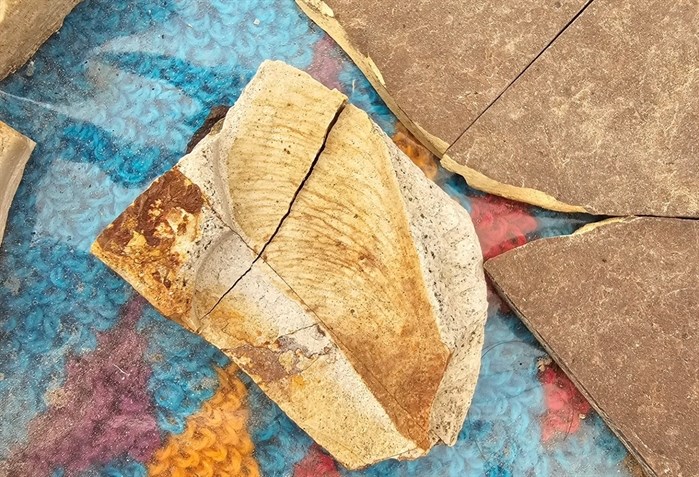
A maple seed pod is fossilized in a rock near Kamloops.
Image Credit: SUBMITTED/ Adrian Lewis
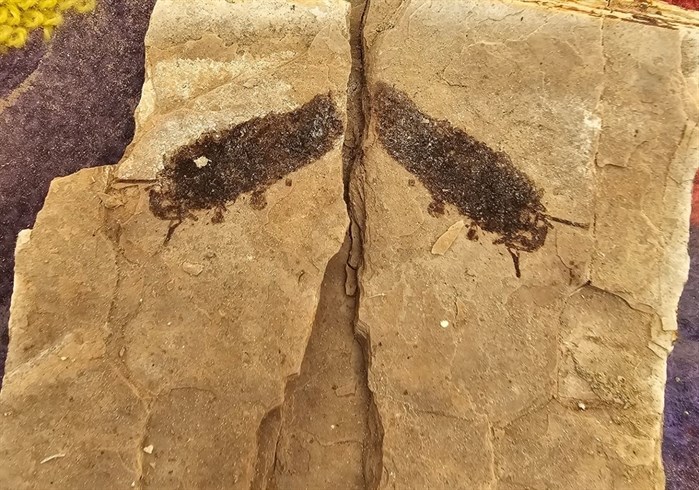
This fossil of a giant caterpillar from the Eocene epoch is at McAbee Fossil Beds near Kamloops.
Image Credit: SUBMITTED/ Adrian Lewis
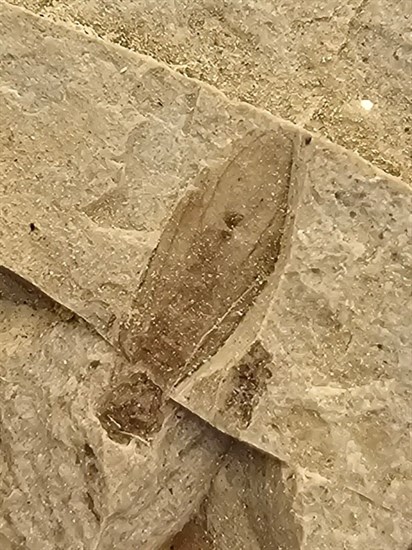
A giant bug is fossilized in stone at an ancient lake bed near Kamloops.
Image Credit: SUBMITTED/ Adrian Lewis
To contact a reporter for this story, email Shannon Ainslie or call 250-819-6089 or email the editor. You can also submit photos, videos or news tips to the newsroom and be entered to win a monthly prize draw.
We welcome your comments and opinions on our stories but play nice. We won't censor or delete comments unless they contain off-topic statements or links, unnecessary vulgarity, false facts, spam or obviously fake profiles. If you have any concerns about what you see in comments, email the editor in the link above. SUBSCRIBE to our awesome newsletter here.
News from © iNFOnews, 2025